So you’ve met the woman you want to propose to. All that’s needed now is the right engagement ring. If you are about to spend all your hard earned money on the right sparkler, perhaps it is worth considering how it was made, and how the materials were sourced. Sustainable Engagement rings are just that: rings that are using materials responsibly like recycling gold, using conflict free diamonds and pearls that support local communities and the marine environment.
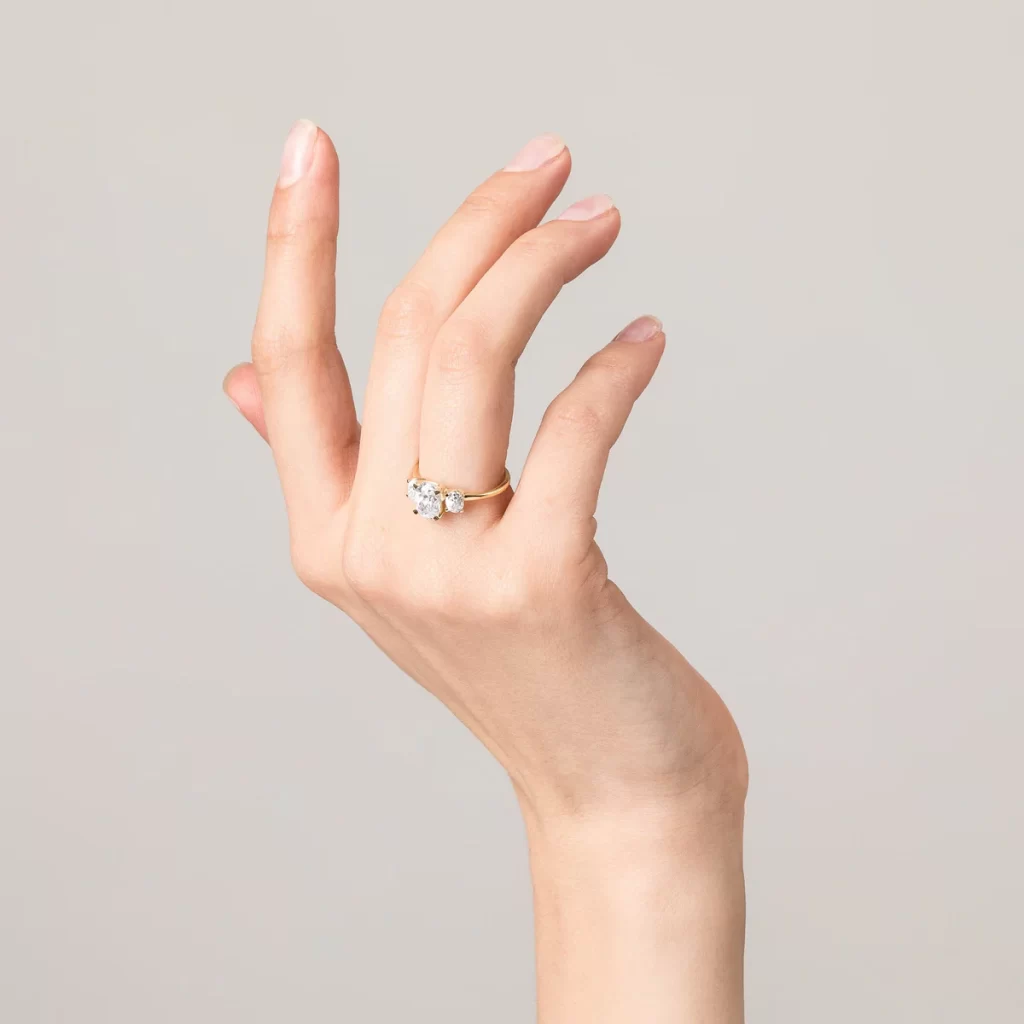
Understanding Sustainability in Jewellery
Sustainability refers to transparent sourcing practices and using sustainable materials when making the jewelry.
There are two concepts notably in place to check up on sustainability and accountability in jewellery making. One is blockchain technology, to identify jewelry sources, and another is Fairmining, which are small scale mining operations that offer visibility, and support both the local economy and social development.

These are exciting developments in technology, because, as IBM proports to do with their “Trustchain” is to allow you to scan a QR code on a diamond you want to buy and see the entire supply chain.

I had a look at the Fairmined website and it’s pretty interesting stuff the way the really want to empower both the environment and the worker. Workers receive between 4-6 US dollars for every gram of gold they mine, depending on whether it was extracted with chemicals or not. Not surprisingly, South Africa is not on the map. It’s something we really can improve on, and according to this article, we are lagging behind when it comes to a modern, transparent system.
What is empowering about the article though, which reports on a mining indaba, is that times have changed and African countries want the benefit of the minerals for its people.
Ghana’s mining minister Samuel Jinapor said relations between African and industrialised countries were fundamentally different to 50 years ago, when the approach to mining was ‘dig and ship.’ Now African countries demand two things: value addition and indigenous participation. Ghana has policies to ensure that lithium, for instance, can’t be exported raw, and there must be at least 30% Ghanaian participation. It will be interesting to see whether that sort of policy can be sustained.
Types of Sustainable Engagement Rings
Lab-grown Diamonds
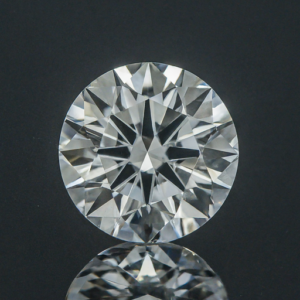
So how do you make a diamond in the lab? There are two methods. The HPHT method is high pressure, high temperature. Graphite or diamond powder is placed into a reactor chamber on top of the diamond seed, and a metal catalyst is added for growth. This is basically imitating the way diamonds were made long ago. The second method is CVD – Chemical Vapour Disposition. Hydrocarbon gas and hydrogen are placed into a vacuum chamber at very low pressures and then heated. The hydrogen converts to atomic hydrogen and this promotes diamond formation. The activated carbon-hydrogen atoms in the chamber attach to the diamond seed, bonding with its carbon atoms and replicating the crystal structure of the seed.
I’ve got a confession to make. My engagement ring was actually cubic zirconia. It is forged from zirconium oxide powders mixed with calcium and magnesium.
Another “fake diamond” is moissanite, which is created as a single crystal out of silicon and carbon. It’s hardier and more resilient than cubic zirconia, and it has a sparkling/ rainbow effect.
Recycled Metals
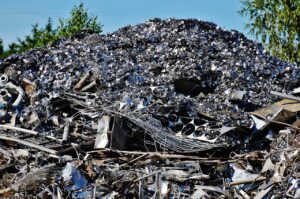
Eco-friendly recycled metals are gold, platinum and palladium (a silvery white metal) that have been melted down to be reused.
The types of recycled jewelry metals are: white gold (gold mixed with another white metal such as palladium, silver, zinc and nickel), yellow gold (gold, copper and silver), rose gold (gold with a 25% copper silver alloy) and platinum.
Vintage and Second-Hand Rings
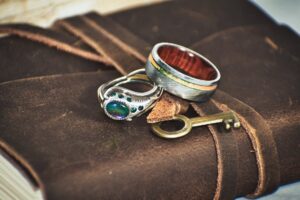
Explore your local charity or antique shop to find that special ring. Even if the setting is outdated, you could always reset or recreate it with a jeweler.
How to Choose Sustainable Engagement Rings
Research the Brand
Check out their website and ask questions. They might even have certificates available to show that their diamonds are sustainable.
Consider the Design and Style
This is obviously your personal preference, but remember that your lab grown rings are going to be less expensive, so you can afford to get the style you want.
Budget Considerations
While lab grown diamonds will be cheaper, a real diamond is an investment and something that can be handed down for generations. (I’m keeping my grandmother’s ring for Nicky to use one day). You’re the one who has to balance this all up and decide what you can afford, and what you really want.
Benefits of Sustainable Engagement Rings
Environmental impact reduction

Mining is something that isn’t great for the environment. It takes a lot of fossil fuels and water to sustain a mine. It also damages the land. Only those mines that are committed to fair practices (both for the Earth and their workers) can call themselves sustainable.
Ethical labour practices
I don’t really need to say much here, especially in South Africa. Here’s a research paper all about their poor living conditions and lack of access to the basics. You can also read about labour exploitation here and how the author hopes for more coalition.
Unique and personalised options
You might have more options with lab grown diamonds to create the ring you really want.
Challenges and Misconceptions
Myths about quality and appearance
Lab grown diamonds are just as durable as the real thing. Moissanite has a double refractive ability, which means it holds more sparkle than a diamond and the light emitted is of a rainbow effect.
Availability of sustainable options
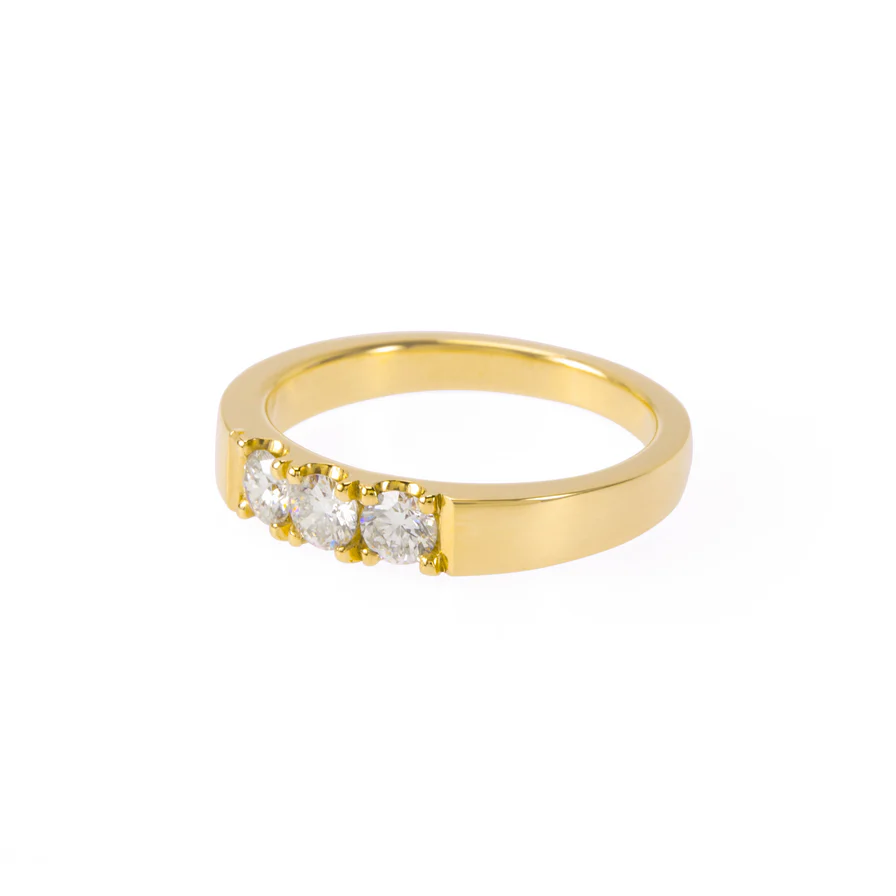
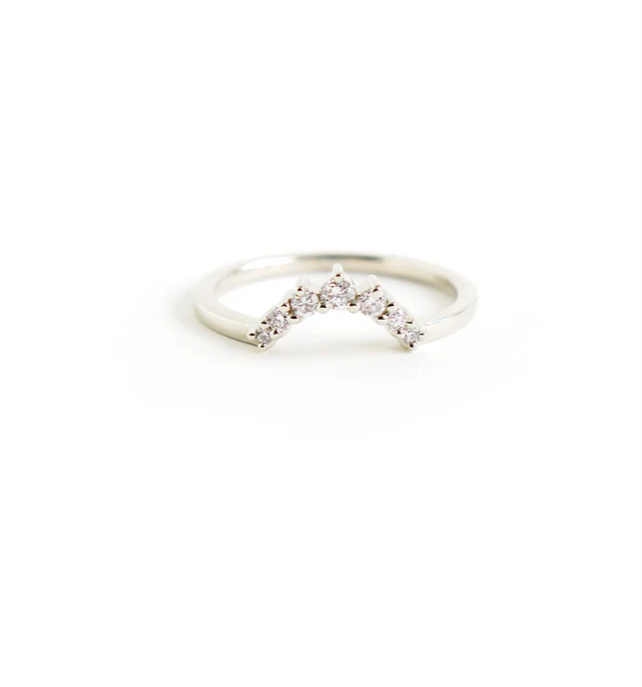
I did a bit of a Google search for sustainable jewellery in South Africa and came across AuTerra Jewellery, who use silver and gold recycled from e-waste. Dear Rae is another one that mentions their adherence to the Kimberly Process (a trade agreement preventing the flow of conflict diamonds). There are a lot more to explore as well, so I suggest you do your homework.
And while we are on the topic of sustainability, a great website to check out is Faithful to Nature’s options. They have everything from a bamboo toothbrush to plastic free cleaning and pantry items.

Price vs. value debate
Lab grown diamonds are 30-50% cheaper than real diamonds. They still look great and give you the luxury without losing the sustainability.
FAQs
1. What makes an engagement ring sustainable?
A sustainable engagement ring is crafted with minimal environmental impact and often incorporates ethical practices. Key factors include using recycled or Fairmined metals, ethically sourced or lab-grown diamonds, and working with jewelers who prioritize environmental responsibility and transparency in their supply chains.
2. How do I ensure the ethical sourcing of diamonds?
To ensure ethical sourcing, look for diamonds certified by organizations like the Kimberley Process, which aims to prevent conflict diamonds from entering the market. However, this process isn’t foolproof. For better assurance, seek diamonds with additional certifications like those from the Responsible Jewellery Council (RJC) or Fair Trade, or consider lab-grown diamonds as an alternative. It’s also wise to work with jewelers who provide full transparency about their diamond sourcing.
3. Are lab-grown diamonds considered real?

Yes, lab-grown diamonds are considered real diamonds. They have the same physical, chemical, and optical properties as mined diamonds, but are created in a controlled laboratory environment. Lab-grown diamonds are often praised for being more sustainable and ethical, as their production generally has a lower environmental impact and avoids the ethical issues sometimes associated with mining.
4. What are the most eco-friendly engagement rings?
The most eco-friendly engagement rings typically feature recycled metals, lab-grown diamonds, or alternative gemstones like moissanite. Rings that incorporate vintage or upcycled materials also tend to have a lower environmental impact. Eco-conscious jewelers who adhere to sustainable practices, such as reducing waste and using renewable energy, also contribute to the eco-friendliness of the ring.
5. Can vintage rings be more sustainable?

Yes, vintage rings can be more sustainable because they reduce the demand for new mining and manufacturing, both of which have significant environmental impacts. By choosing a vintage ring, you’re essentially recycling a piece of jewelry, which is a sustainable practice. Additionally, vintage rings often have unique designs and can carry historical and sentimental value.
6. How do recycled metals compare in quality?
Recycled metals, such as recycled gold, silver, or platinum, are of the same quality as newly mined metals. The recycling process involves melting down the metal and purifying it, which restores it to its original state. Therefore, using recycled metals does not compromise the quality, durability, or appearance of the engagement ring, making them an excellent sustainable choice.
Conclusion
If you’re about to buy something that the love of your life is going to wear every day, consider choosing sustainable engagement rings. It’s really a very special gift for her. I always felt a bit embarrassed about my cheap cubic zirconia, but looking back on it not only was it better for the environment and people, the flower pattern was exactly what I wanted. There are lots of options to buy responsibly: support the future of sustainable and transparent jewellery making.
This post was sponsored by Responsival.



[…] The Ultimate Guide to Sustainable Engagement Rings […]